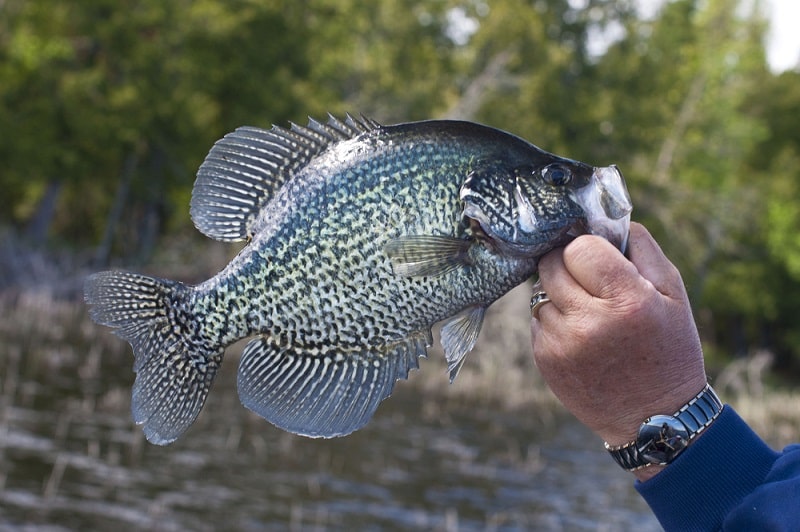
For those who fish for crappie, you may have noticed that their color may be different depending on the seasons. Subtle color changes are common for many species of fish while those of the same species may have natural variations in color.
Why Do Crappie Change Color
For crappie, there are specific reasons why they change color and when it happens. For those who fish for crappie a good part of the year, you may notice changes based on varying conditions. Some of which are natural to many fish while others are specific to crappie.
Differences Between White & Black Crappie
It should be noted that there are two basic types of crappie, white and black. While the differences in their actual coloring are not that stark, white crappie tend to have vertical stripes while black crappie tend to have more spots. For those who fish in areas where both types of crappie exist, they may be mistaking one type for another which means that their colors are not actually changing.
Instead, it is the natural coloring of both types given it’s one of the few noticeable differences between white and black crappie. However, during portion of the year male crappie of both types will change color noticeably.
Spawning
Arguably the most obvious color change is to the male crappie when they spawn. During the time of spawning, the rush of hormones in the crappie will turn them a darker coloring. In addition, the red tails that are featured will be less noticeable due to the darker overall coloring. In any event, when spawning season arrives, you will know primarily from the darker colors of the males.
Females do not undergo such a dramatic change, but they may appear more of an off-yellow color as they are ready to release their eggs. The coloring of the female crappie will become mushier and more off-yellow as they close in on spawning season due to the eggs building up inside them.
Other Reasons for Color Changes
Apart from spawning, the only other major reason a crappie may change color is due to the temperature of the water. As the water changes from warm to cold and back to warm, you may notice that the color of the crappie will change a little as well. This is also in part due to when crappie are preparing to spawn as the water starts to warm.
When cold, many crappies will have a pale, white appearance. This is also true for crappie that live closer to the bottom. The lighter coloring acts as camouflage, mixing in with the sandy, rocky bottom of streams, rivers, and lakes. The fish are harder to see and therefore more protected. In cold, deeper water, you can expect most crappie to be light and pale in coloring.
It is true that spawning for both males and females are the primary reasons for the color changes. Other reasons such as temperature variations and the type of food consumed may only result in modest, if hardly noticeable changes in both types of crappie.